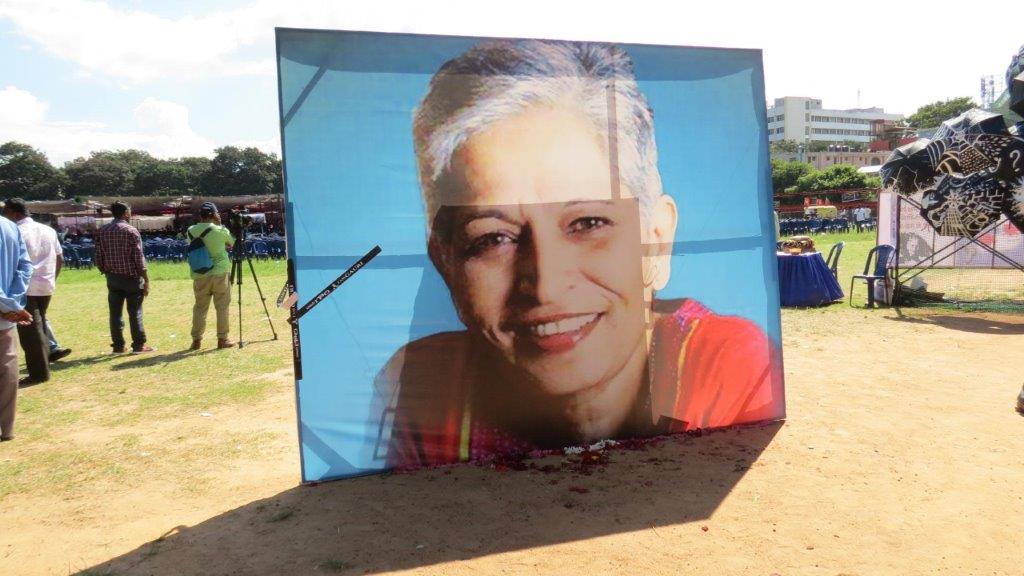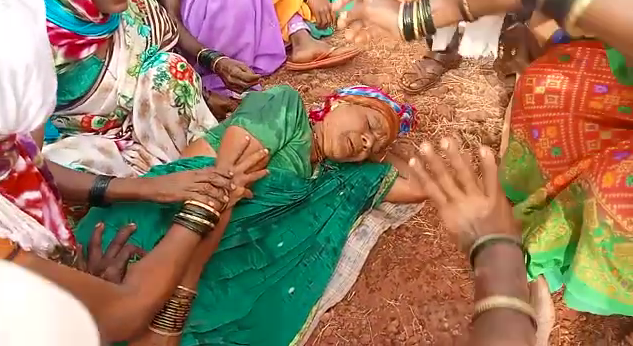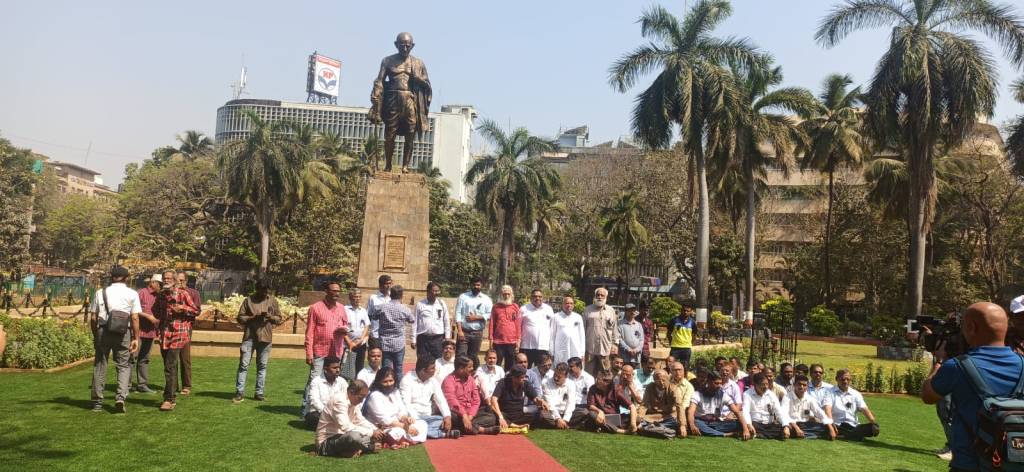Three years to the day on which journalist and editor Gauri Lankesh was gunned down outside her Bangalore home, justice is still elusive, says Laxmi Murthy.
Gauri Lankesh, 56, the outspoken editor of Kannada weekly Gauri Lankesh Patrike known for its sharp critiques of right-wing fundamentalism, was killed by two unidentified assailants when she returned home from work on the evening of September 5, 2017. Her murder was widely believed to be pre-planned and part of a larger plan to silence critical anti-Hindutva voices.

In November 2018, the SIT (Special Investigation Team) filed a 9,325-page charge sheet in the Gauri Lankesh murder case. The charge sheet names 18 people, of which two are still at large, who have been accused of indoctrination, conspiracy, undergoing weapons procurement and training, mobilising funds, and carrying out the murder among other charges.
The police claimed to be in possession of the murder weapons, which they said were thrown in the Vasai Creek, between the Mumbai-Thane highway, and had to recover the country-made 7.65 mm guns that would help the prosecution.
Using traditional policing methods, as well as Artificial Intelligence, gait analysis and DNA profiling, an 80-member team uncovered an elaborate conspiracy involving several people and several months of planning. Several of the accused have links to the Hindu extremist group Sanatan Sanstha and its allied outfit Hindu Janajagruti Samiti.

The first charge sheet in the case was filed against gunrunner K T Naveen Kumar. In its first charge sheet against Kumar, the SIT had quoted the alleged accused as saying that Lankesh was killed for her ‘“anti-Hindu views”.
The chain was long—from Naveen Kumar, the gunrunner; Praveen, the recruiter; Parashuram Waghmore, the alleged assassin; Rajesh Bangera, the weapons trainer; to Amol Kale, the alleged mastermind. A total of 18 people have been accused in the crime, including shooter Waghmare, masterminds Amol Kale, Sujith Kumar alias Praveen and Amit Degwekar, PTI reported.
On January 10, 2020, the 17th accused in the crime, Rishikesh Dewerkar, 44, who had been absconding, was arrested from Katras town, about 30 km from Dhanbad in Jharkhand, where he had been living under assumed names ‘Rajesh’, ‘Murali’ etc. for the past couple of years or so.
The Special Investigation Team (SIT) probing the murder named Hindu right-wing outfit Sanatan Sanstha in its additional charge sheet as an accused filed before a city court. The gang that carried out Lankesh’s killing was allegedly inspired by Kshatra Dharma Sadhana, a book published by the Sanatan Sanstha which identified certain individuals as a “durjan” (evil person). Others on the list included playwright Girish Karnad and rationalist free-thinker KS Bhagawan.
The gang is also allegedly linked with the killing of rationalists M M Kalburgi, Narendra Dabholkar and Govind Pansare. In fact, Ganesh Miskin, a key accused in the Gauri Lankesh murder case, has been identified as the one who fired at Kalburgi, a noted Kannada litterateur.

Taking note of the similarities in these murders, the Supreme Court in December 2018 had recommended clubbing together the investigation into all these murders, under the Central Bureau of Investigation (CBI). However, Kavitha Lankesh, Gauri’s sister, had opposed the move, on grounds that the investigation by the Karnataka SIT was already at an advanced stage. The Supreme Court in February 2019 had directed that the investigation into the Kalburgi murder be transferred to the same team probing the Gauri Lankesh case.
Far from its image as a spiritual organisation alone, the Sanatan Sanstha has been implicated by the Anti-Terror Squad (ATS) with planting bombs in Vashi, Panvel, and Thane in Maharashtra in 2008, with several of its members proven indicted. A bomb blast in Goa in 2009 was also traced back to the Sanstha.
In August 2018, the ATS recovered guns, bombs, detonators and other explosives from the home of Vaibhav Raut, a Sanatan Sanstha worker, in Nalasopara near Mumbai. Raut was one of the people who had earlier been named by Kale, arrested by the Karnataka SIT as a mastermind in the Gauri Lankesh murder.
With more and more threads emerging to link the gang to murders of secularists, rationalists and critics of Hindutva, the following questions emerge: how can leaders of these right-wing groups also be made accountable for the violence their ideology begets? What are the ways to end impunity of extremist groups enjoying state backing? How can these extremist ideologies be effectively countered beyond bans, which would only spawn hydra headed outfits with similar, if not more virulent extremist ideology that is inimical to free speech and violently intolerant of dissent?
Read more on the timeline of investigations into the murder of Gauri Lankesh: https://freespeechcollective.in/2018/10/31/gauri-lankesh-chronicle-of-a-murder-foretold/amp/
To read a detailed update, click here: https://cjp.org.in/meticulous-investigation-yet-little-headway-in-gauri-lankesh-murder-case


